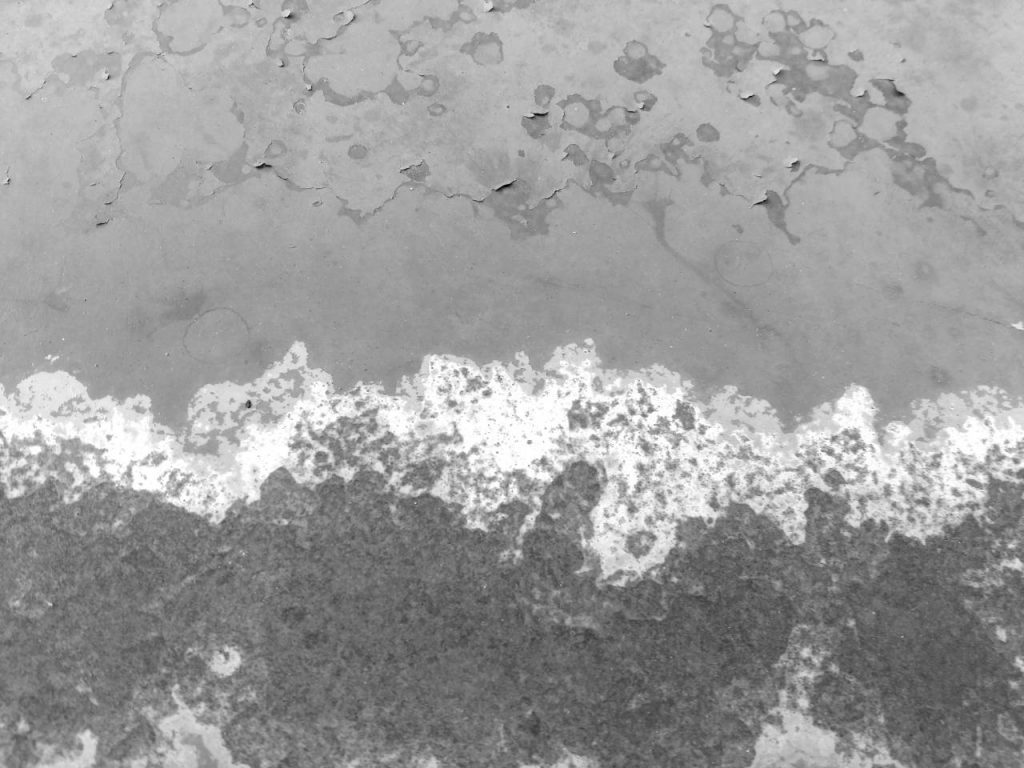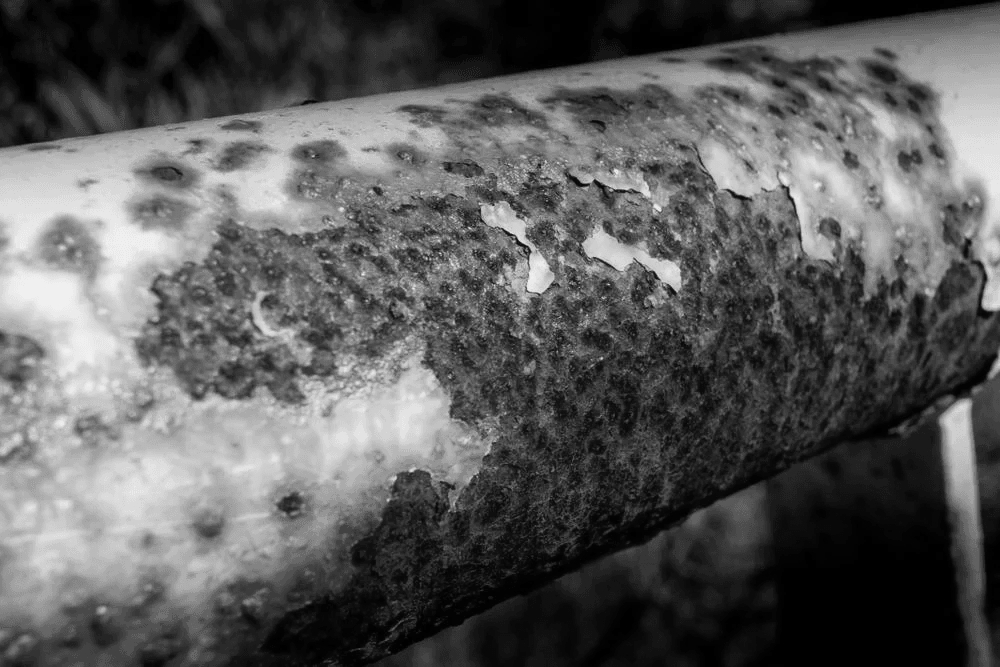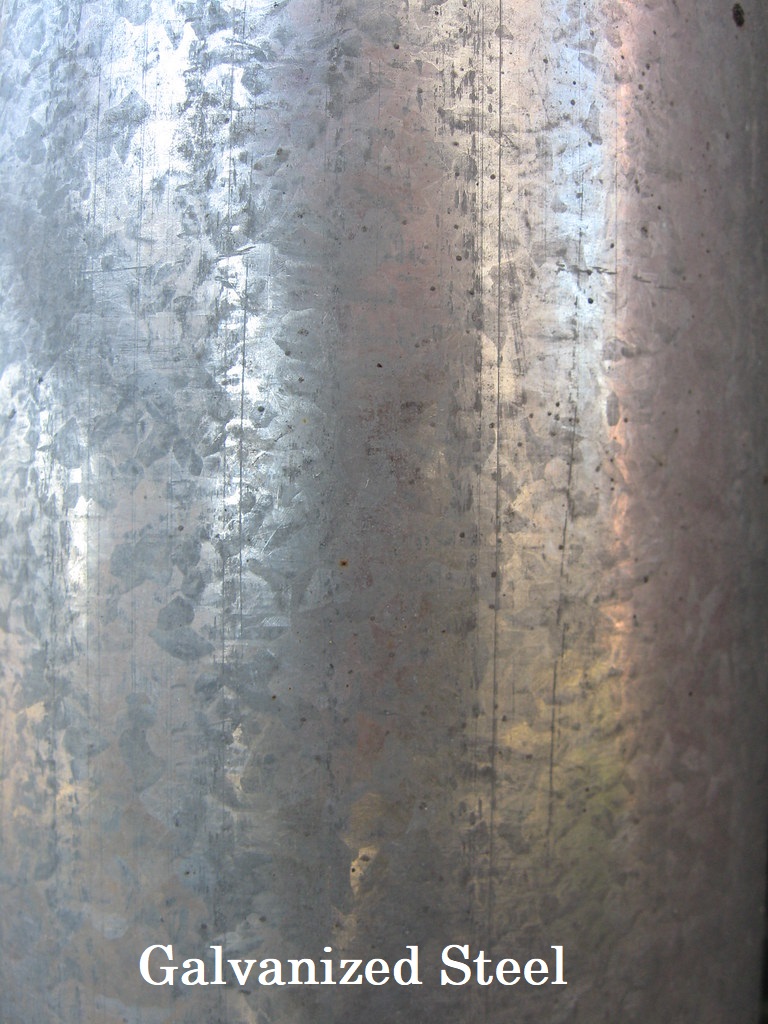
Updated August 3, 2022
White Rust Formation
White rust is also known as galvanic corrosion. White rust is a chalky, waxy material that forms on galvanized cooling towers.
Galvanized sheet metal naturally passivates with a protective layer of zinc oxide. Chemically this passivation layer is a combination of zinc hydroxide and zinc carbonate. It is important to control white rust immediately or more extensive and damaging corrosion will occur. White rust forms when galvanized steel is exposed to water with excess carbonate ions and a pH above 8.3. Zinc lasts the longest in pH ranges of 6.5-8.
To contact the water treatment experts for the prevention and treatment of white rust in cooling towers click here.
What Can Be Done About White Rust In Cooling Towers?

New galvanized cooling towers should be treated to maintain the pH of the circulating water below 8.3 for a period of six to nine months. This will ensure that the alkalinity of the tower water remains below the level at which white rust forms. Under these conditions, galvanized surfaces form a protective layer of zinc carbonate which helps protect the steel beneath the galvanizing. Also, the combination of low pH and phosphate-based chemicals can significantly reduce the time needed to properly condition a new cooling tower (30 to 60 days depending on water conditions). The passivation process can be utilized to prevent white rust. This process takes around 12-14 weeks, and the different methods to passivate are described below:
3 Passivation Methods to Prevent White Rust
Method 1:
Adjust make-up water cycles of concentration to lower pH. How much it needs to be lowered depends on the current pH, hardness, and other chemical characteristics of the make-up water. Water consumption will increase for the duration of this method.
Method 2:
Install an additional chemical pump that will administer sulfuric acid solutions. These solutions will ensure the pH in the tower water is below 8.3. The sulfuric acid reacts with and neutralizes the natural alkalinity in the cooling tower water.
Method 3:
Utilize corrosion inhibitors at a higher concentration. Adjust the system to lower cycles of concentration to achieve less corrosive pH. A corrosion inhibitor in conjunction with a lower pH will help inhibit white rust.
(For warranty purposes, follow and document the cooling tower manufacturer’s guidelines.
Preventative Chemistry Program

It is important to implement the right chemical treatment program to keep the galvanized surfaces in the tower free from white rust. The process of doing this will be different after the passivation process is complete or during future passivation. Important factors to consider when implementing a chemical treatment program generally include pH, chloride, sulfates, alkalinity, and hardness. These factors may differ based on the manufacturer’s guidelines and local water quality.
The use of Chardon’s chemistry inhibits the production of excessive levels of zinc carbonate, allowing the natural oxide layer to form providing long-term protection. To learn more about Chardon’s program click here.

Matt Welsh
Matt Welsh is the Vice President and Water Consultant at Chardon Labs. He helps consult a wide range of customers utilizing various methods of water treatment, from chemical to chemical-free approaches, large and small applications, and across a wide range of geographical influences. With 20 years of water treatment experience, including a wide range of troubleshooting and service in potable water and non-potable HVAC and industrial applications, he is an expert in water treatment chemistry for cooling towers, boilers, and closed-loop systems.
